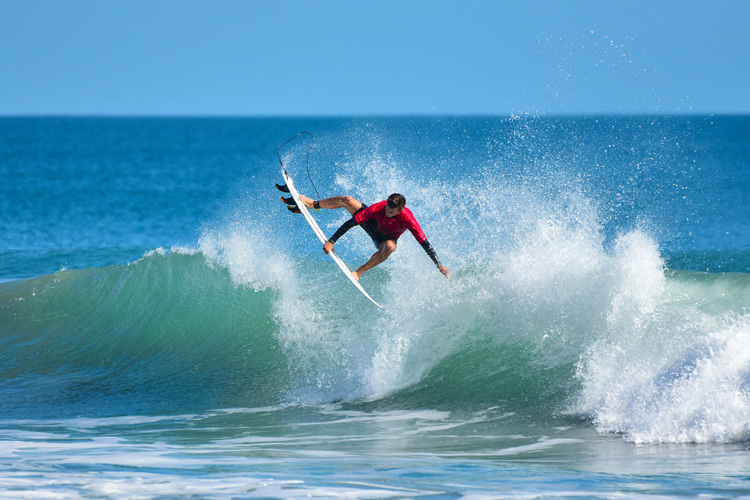It doesn't have the best waves on the planet, but it's one of the most active surfing centers in the United States. Welcome to Cocoa Beach, Florida.
Cocoa Beach is a resort town located on a barrier island just an hour's drive east of Orlando on the Sunshine State's stunning Space Coast.
The city of Cocoa Beach as we know it today was founded in 1925.
However, the place was first settled by fishermen around 1860 in what was initially named Indian River City.
Before World War II, Cocoa Beach had 39 full-time residents.
The region and Brevard County only exploded with the establishment of the missile launch facility at Cape Canaveral in 1949.
The Floridian sandbar community grew exponentially in the 1960s.
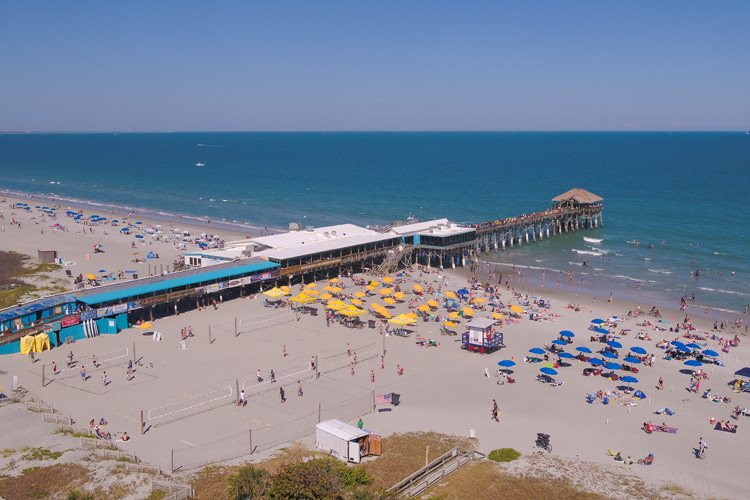
The Pioneers
And so did surfing, a sport that had crossed America and was about to take over the world from west to east.
The place has been visited by surfers since the 1950s when a group of wave-riding enthusiasts regularly trekked from south Florida with their longboards to surf Cocoa Beach and Melbourne.
Pat O'Hare and Rick James learn the art of surfboard shaping at the Greg Noll factory in Hermosa Beach.
In 1963, the duo moved to Cocoa Beach and founded James and O'Hare Surfboards.
In the 1960s, the town also hosted Surfboards Hawaii, a popular surf shop owned by Che Sharp.
Time would propel Cocoa Beach and Floridian surfers to the global stages.
Surfers like Gary Propper, Bruce Valluzi, Mike Tabeling, Claude Codgen, Greg Loehr, Jeff Crawford, Greg Mungall, Matt Kechele, Todd Holland, and Kelly Slater gained national and international recognition here.
Four-time women's world surfing champion Lisa Andersen is from Ormond Beach, just a few miles north of Cocoa Beach.
The 1966 vice-world champion Mimi Munro was born in Daytona Beach.
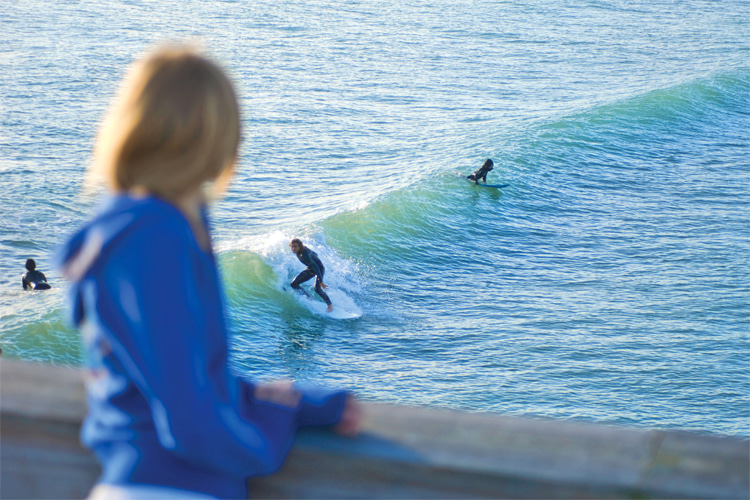
Space and Surfing: The Perfect Marriage
Missileland USA was quickly becoming one of the most popular surf destinations on the East Coast, even though initially, nearly all businesses had space-related names.
Interestingly, the Space Age somehow coincided with the Surfing Age.
However, it's important to stress that the first waves ridden in Florida date back to the early 20th century.
"Cocoa Beach has a rich surfing history. There are records from newspapers showing that surfing started as early as 1909," explains John Hughes from the Florida Surfing Museum.
"But in the 1960s, it became the epicenter of surfing for a number of different reasons. The waves here are the right balance of being surfable and good weather, so it attracted people here."
"A lot of that was also driven by the Space Center. There was a rapid influx of young families moving into the area for the support of the space program."
But there's another variable that was also relevant to the explosion of surfing in Cocoa Beach.
"It's probably one of the best areas in the State as far as being able to get access to the beach. A lot of areas are restricted, but you can surf really anywhere in the county," adds Hughes.
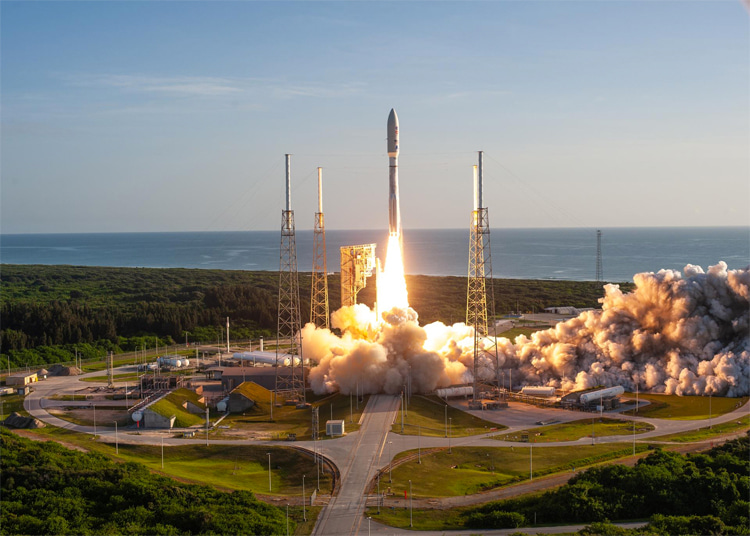
Kelly Slater: A Cocoa Beach Hero
The most successful competitive surfer of all time, Kelly Slater, was born in Cocoa Beach on February 11, 1972.
The 11-time world surfing champion was raised in the Floridian surfing haven and, as a teenager, won four consecutive United States Surfing Championships titles in both Menehune and Boys divisions.
At 14, Kelly Slater claimed the boys and pro divisions at the Easter Surf Festival held at Canaveral Pier, Cocoa Beach Pier's former designation.
First held in 1964, the Easter Surf Festival is one of the oldest surf competitions in America.
Alongside Sebastian Inlet, the Canaveral Pier is one of the most iconic surf breaks in Florida.
It was built in 1962 and started concentrating sand around it, which helped amplify the less powerful swells and create waist-to-chest-high waves.
Despite its reputation for being the "small wave capital of the world," the truth is that the place served as a magnet to future surfing champions and professional athletes.
Local surf contests have always attracted large crowds, making Cocoa Beach the epicenter of Floridian surfing for decades.
In 2002, 3rd Street North was renamed Kelly Slater Way.
On November 17, 2010, Cocoa Beach unveiled the 10-foot bronze statue of its surfing hero at the waterfront promenade, with the mayor officially declaring it the date "Kelly Slater Day."
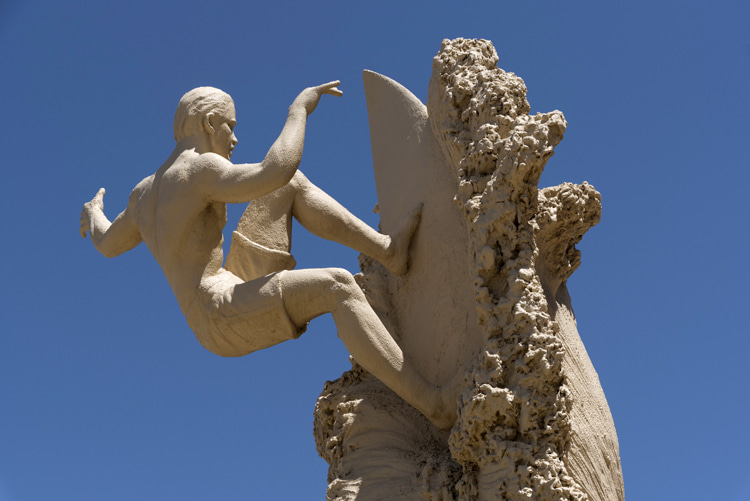
The Surfing Santas
The Floridian surfing capital is also known for an unusual tradition - Surfing Santa.
"In 2009, I saw a Honda car commercial on TV showing some guys surfing in Santa suits in California," reveals George Trosset, founder of the initiative.
"And I thought, 'I want to be a Surfing Santa.' So, I asked my wife to make me a Surfing Sant outfit, called my son, and asked him to meet me at the beach."
"I told him and his wife had to be dressed as elves. I'm going to be Santa, and we're going surfing."
"The newspaper showed up, took some pictures, and on December 25, 2009, the front page of Florida Today was a picture of me riding a wave dressed as Santa."
The following year, George had 19 friends following him on the cold waters of the Atlantic Ocean.
In 2011, 84 people showed up. Then, figures grew to 125, 182, 250, 325, etc.
By 2018, there were 600 Surfing Santas riding the waves of Cocoa Beach on Christmas Eve and around 10,000 spectators.
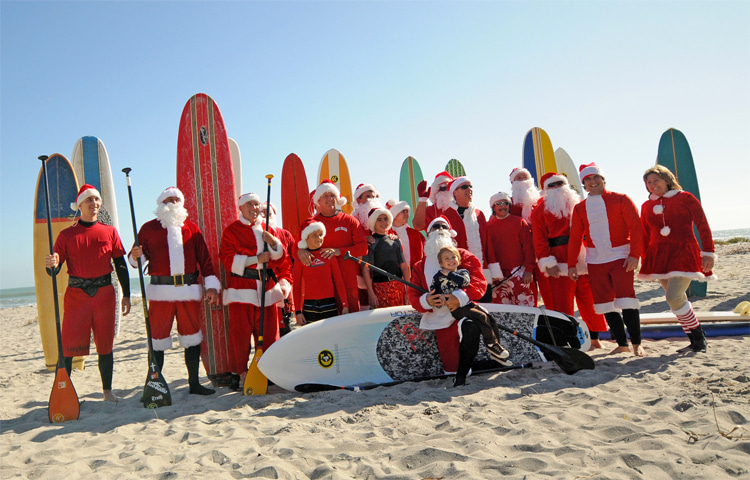
The Ultimate Floridian Beach Break
The small yet vibrant and laid-back seaside town is also known for its iconic pier that stretches 800 feet over the Atlantic Ocean.
Although Cocoa Beach only has 12 miles of coastline, the city's name is often used as shorthand for a 72-mile stretch of Brevard County that includes Satellite Beach, Indiatlantic, Melbourne, and the State's best-known surf spot, Sebastian Inlet.
Cocoa Beach is the perfect place for people to learn how to surf and for any beginner wishing to progress and improve their skills.
But it's also the ideal playing field for advanced surfers. Cocoa Beach is the ultimate beach break, featuring all types of waves.
There are no rocks or reefs - only a shallow sandbar where beginners can walk their surfboards out easily.
Cocoa Beach has a surfing atmosphere and is proud to promote the surfer lifestyle on America's Atlantic coastline.
The heart of East Coast surfing has everything you need to enjoy an unforgettable time in the water - board rentals, surfing lessons, oceanfront accommodation, and great eating places.
Cocoa Beach is home to the Florida Surf Museum, the East Coast Surfing Hall of Fame, and the world's largest surfer store - Ron Jon Surf Shop.
Ron Jon Surf Shop's flagship store welcomes around two million visitors every year.
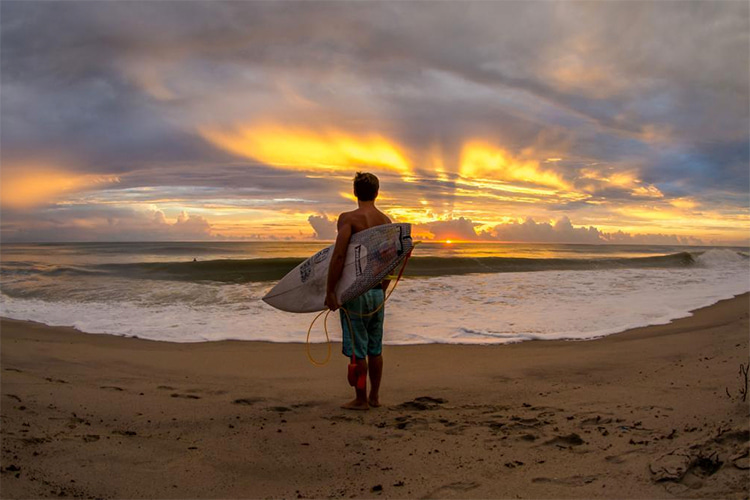
The Cocoa Beach Pier Wave
In 1999, a Surfing magazine article asked the controversial question: "Why are the Cocoa Beach guys so good when the waves are so bad?"
"Greg Loehr thought it was because local surfers were competitive among themselves but united in wanting to prove something to the rest of the surf world," writes Matt Warshaw in "The Encyclopedia of Surfing."
Loehr believed that "we surfed for fun, but also better than the Californians."
The Cocoa Beach shoreline faces east, meaning that the sun rises in the ocean and sets behind the city.
It is directly and fully exposed to the Atlantic Ocean but doesn't quite receive much swell, except during the Hurricane Season.
When powerful winter northeast swells roll in, the Cocoa Beach Pier provides shelter from the accompanying winds at a more manageable size.
On a good day, each dead-end access street leads to a surfable peak.
The waves are generally longer and mushier at low tide and tend to become a shore break at high tide.
The best rideable swells appear from September/October to March and vary from three to ten feet.
During summer, sea breeze-generated waves create choppy and sloppy conditions. The exception is when hurricanes moving from West Africa to the Caribbean from August to October deliver quality waves.
The most predominant wind direction is west and southeast during the summer and north and northeast during winter.
Offshore winds only rarely kick in when decent swells arrive, and lightning may force surfers to leave the water in the best surf months.
Last but not least, it's important to underline that Florida is one of the world's regions with the highest number of shark attacks.
